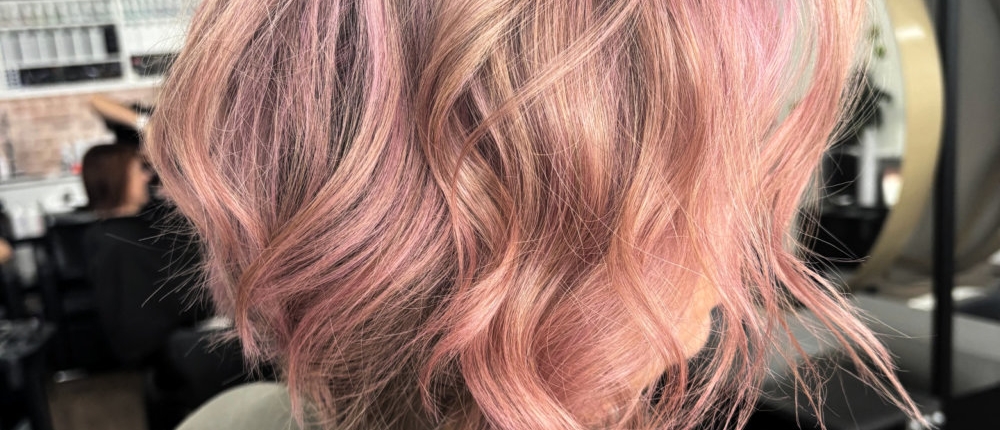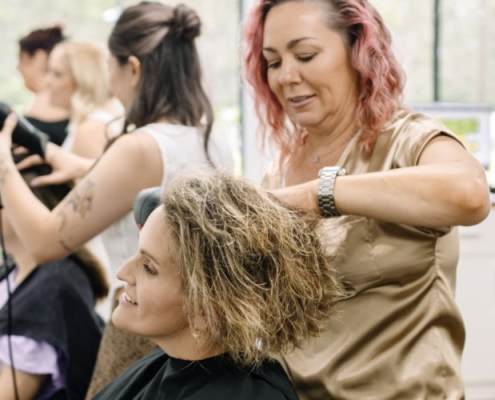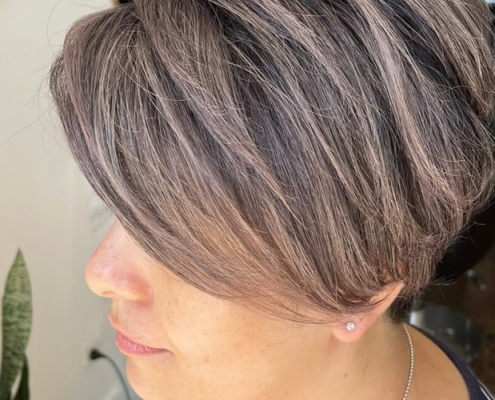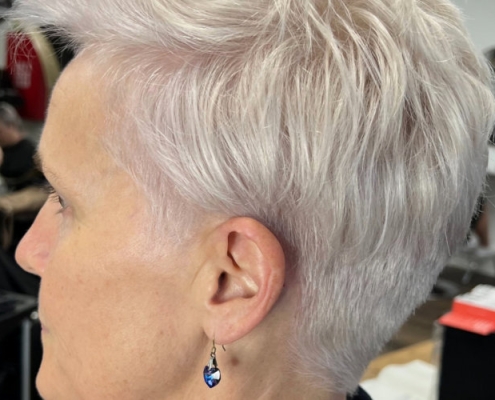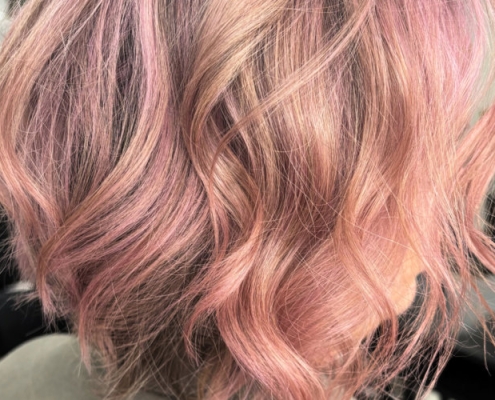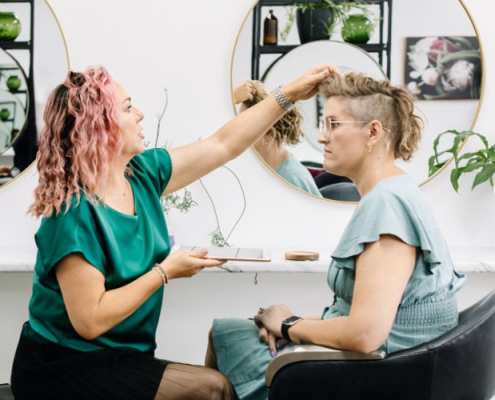Growing Out Short Hair: How to Avoid the Awkward Phase
Deciding to grow out short hair is exciting, but it often comes with an awkward in-between phase where hair can feel unmanageable. Many people struggle with uneven lengths, styling challenges, and frustration when transitioning from a pixie cut, bob, or other short styles to longer hair.
Fortunately, with the right strategies, styling techniques, and hair care routine, you can grow out short hair gracefully without feeling stuck in an awkward phase. This guide will walk you through each stage of hair growth, the best styling tips, and professional tricks to make the transition seamless.
Understanding the Hair Growth Timeline
On average, hair grows about 1.25 cm (0.5 inches) per month, meaning it can take several months or even a year to reach your desired length. Below is a general timeline of what to expect during the growing-out process.

Essential Tips for Growing Out Short Hair Smoothly
1. Get Regular Trims (Yes, Really!)
While it may seem counterproductive, getting regular trims every 6-8 weeks helps prevent split ends and maintains a shape that looks intentional rather than messy.
- Focus on the back: The nape area often grows out faster, leading to an unbalanced mullet-like effect. Ask your hairstylist to shape it while allowing the top layers to catch up.
- Keep layers soft: Gradual layers can help blend uneven growth stages.
2. Use Styling Tricks to Blend Uneven Lengths
During the awkward phase, your hair may have sections that grow at different rates. The right styling techniques can help you manage these tricky in-between stages.
Best Styling Tricks:
- Side-Swept Fringe: If your fringe is growing out, train them to sweep to the side with a blow-dryer and round brush.
- Soft Waves: Adding slight waves with a curling wand can disguise uneven layers.
- Clip and Pin It: Use bobby pins or stylish clips to tuck away awkward strands.
- Try a Deep Side Part: This can add volume and make in-between lengths look more polished.
3. Invest in Growth-Boosting Hair Products
Using the right products can promote healthy hair growth and keep your strands strong during the transition.
Recommended Products:
- Scalp Stimulating Serum: Encourages hair follicles to stay in the active growth phase.
- Biotin and Keratin Treatments: Strengthens hair strands, reducing breakage.
- Lightweight Leave-In Conditioner: Keeps growing hair soft and manageable.
4. Use Accessories to Control Unruly Hair
Hair accessories are lifesavers during the growing-out process. Here are some stylish options to manage awkward lengths:
- Headbands: Great for keeping hair off the face while looking trendy.
- Clips & Barrettes: Tuck away uneven sections stylishly.
- Scarves & Bandanas: Perfect for disguising mullet-like stages.
5. Be Patient and Have Fun with Temporary Styles
Growing out short hair takes time, so embrace the journey by trying out new styles along the way.
- Experiment with different partings: A middle part versus a side part can completely change how your hair looks.
- Play with texture: Messy, tousled styles can make uneven growth appear intentional.
- Try semi-permanent colour: If you’re getting bored, a new hair colour can make the process feel fresh.
When to Consider Professional Help
Growing out short hair can be a frustrating process, especially when you reach the awkward phase where some sections grow faster than others, layers become uneven, and styling becomes a daily challenge. While patience is key, strategic trims, professional shaping, and expert guidance can make a significant difference in how your hair transitions to a longer style.
Knowing when to see a hairstylist can help you maintain a polished look, reduce frustration, and ensure your hair grows out in a flattering, well-shaped manner.
Signs You Should Visit a Hairstylist
Consider booking a professional haircut if you experience any of the following issues:
- Uneven growth: If the back of your hair grows faster than the top or sides, leading to a mullet-like effect.
- Thick, bulky sections: If your hair becomes heavy in certain areas, making it difficult to style.
- Flat or lifeless appearance: If your hair starts to lose shape and volume.
- Uncontrollable cowlicks or flyaways: If awkward sections of hair won’t cooperate, even with styling products.
- Frizz and split ends: If your hair is becoming dry and damaged, making it difficult to manage.
- Transitioning from a very short cut (e.g., pixie): If you need to reshape your hair at key stages of growth.
If you’re still deciding on the best short hairstyle to transition from, check out our guide on Best Short Hairstyles for Different Face Shapes to choose a style that complements your features.
How a Skilled Stylist Can Help
Visiting a hairstylist while growing out short hair doesn’t mean losing progress—rather, it ensures that your hair grows out in a way that looks intentional and stylish. A professional can provide several key services to make the transition smoother:
1. Strategic Trims to Maintain Balance
- Trimming the back and sides: The back of your hair often grows faster than the rest, which can create an uneven look. A stylist can remove bulk from the back while allowing the top layers to catch up.
- Removing weight from thick sections: If you have dense hair, certain areas may become puffy or unmanageable. A stylist can thin out heavy sections while keeping the length intact.
- Cleaning up the neckline: A sharp or overgrown neckline can make short hair look messy. A professional cleanup around the nape can create a more polished transition.
- Dusting split ends: While growing hair out, preventing split ends is essential. A stylist can remove damage without sacrificing overall length.
If you’re growing out a **pixie cut** and struggling with volume control, check out our styling tips in How to Style Short Hair: Tips for Every Hair Type to keep your hair looking great at every stage.
2. Suggesting a Layered Cut to Ease the Transition
When hair grows at different rates, it can create awkward shapes that don’t blend well. A hairstylist can suggest soft, blended layers to create a more natural-looking transition.
- Graduated layers: Perfect for those transitioning from a pixie to a bob, these layers help maintain structure.
- Face-framing layers: These can soften the transition from short to medium-length hair while adding dimension.
- Blunt ends vs. feathered ends: Depending on your hair type, a stylist may recommend either clean, blunt edges (for a polished look) or soft, feathered ends (for a more effortless grow-out).
If you’re unsure which short hairstyle will grow out the best, take a look at Short Hair for Every Age: Flattering Styles for Every Decade for inspiration based on your stage of life.
3. Offering Product Recommendations Tailored to Your Hair Type
As your hair grows, its texture and styling needs may change. A professional stylist can help you select the right hair care and styling products to support healthy growth and ease styling frustrations.
4. Advising on Temporary Hairstyles to Manage the Transition
If you’re struggling with styling in-between lengths, a stylist can teach you creative ways to style your hair while it grows.
- Blow-dry techniques: Learn how to create volume or smoothness based on your hair’s natural texture.
- Using hot tools: Stylists can show you how to use curling wands or straighteners to blend awkward layers.
- Quick updos and half-up styles: Braids, twists, or clips can help control difficult lengths.
- Fringe styling: If you’re growing out fringe, a stylist can suggest ways to sweep or pin them back stylishly.
Color can also make a huge difference when transitioning from short to longer hair. Consider experimenting with a bold new shade—learn more in Short Hair and Colour: Best Shades for a Bold Look.
Final Thoughts
Growing out short hair doesn’t have to be a frustrating experience. With professional guidance, strategic trims, and the right styling techniques, you can navigate the transition smoothly and keep your hair looking great at every stage.
If you’re looking for expert styling solutions while growing out your hair, check out:
- How to Style Short Hair: Tips for Every Hair Type
- Growing Out Short Hair: How to Avoid the Awkward Phase
With the right approach and expert input, you’ll be able to **transition seamlessly from short to long hair** while maintaining confidence in your look!

